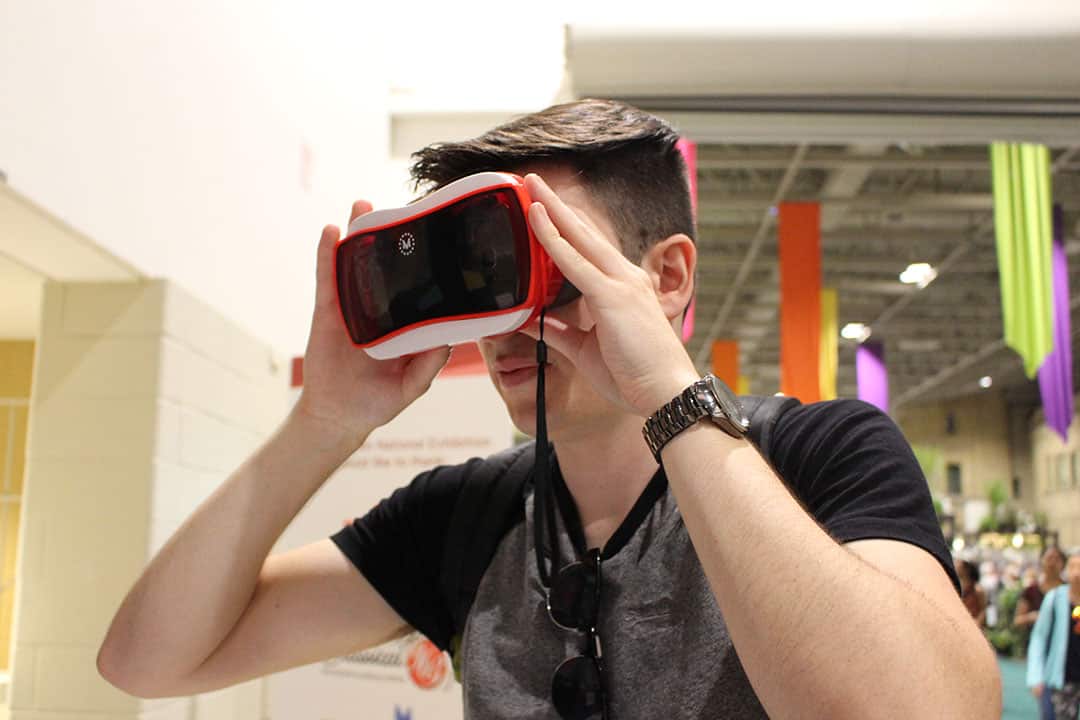At exhibits across the country over the summer, strangers became family, individuals became a community, and the Canadian ordinary became breathtakingly extraordinary. At one of this tour’s stops at Richmond Green, I had the opportunity to experience the Canada 150 SESQUI film, Horizon: a film about Canada, for Canadians, captured in 360 degrees.
What made the film such a technological treat is the viewing dome’s hemispherical design, which allowed the audience to be truly immersed in the atmosphere. Viewers sat closely packed together and felt the screen become an extension of the environments depicted, with even the audience becoming an essential part of the film’s vision of Canada. The experience blurred the lines between past and present experiences of time and space.
SESQUI described Horizon as “a soaring visual symphony,” but it was not simply a feast for the eyes — it was a feast for the senses. Featuring all 10 provinces and three territories of Canada, the footage felt so authentic you almost believed that you were indeed swimming with Belugas in the Hudson Bay, dancing in Foley’s Shed on Newfoundland’s Fogo Island, or running in fields of Prince Edward Island’s tulips. Throughout the film and its magical transitions from one location to another, I felt myself shifting away from and back toward my own reality.
Horizon showcases the diverse beauty of the everyday. Canadian sights that one may or may not have encountered became an artistic spectacle in the film’s hands: parkour in Montréal, BMX biking in Saskatoon, a hockey game in Yellowknife, and Torontonians rushing down Bay Street took on new meaning. Although I grew up in the York Region, I have yet to visit the Richmond Hill Trillium Trail — Horizon showed me a nearby wonder to explore. Canadians often take for granted the scenic charms of our country, but Horizon has embraced and encouraged paying attention to our surroundings.
I left the film beaming with a particular Canadian pride. Through such an engaging, artistic, and technologically innovated medium, I was able to join complete strangers and share a timeless experience with them. This truly allowed for a sense of interconnectedness. I then recalled the origin of the name Canada, ‘kanata’ — a Huron-Iroquois word for ‘village.’ One might say that Horizon’s viewers had come together in a ‘temporary home’ and had been reminded of the importance of community.
SESQUI has also attempted to offer audiences a more individualized experience. This year’s Canadian National Exhibition featured the Celebrate Canada exhibit, where, along with detailed origami archival pieces, SESQUI included a small booth featuring their virtual reality app, MERIDIAN.
Visitors to this particular booth entered into a more personal and private Canadian-themed experience — virtual reality goggles and smartphones offered a chance for internal reflection and exploration. SESQUI states that its MERIDIAN VR technology “pushes the boundaries of participatory storytelling through immersive media.”
The experience offered opportunities for interactive selection and technological play, closing the user off from their surroundings and temporarily suspending them in a new digital, yet intimate, world. A user might choose to experience something familiar, for a feeling of connection, or something obscure, for a sense of adventure and exploration. Just as the reality of being Canadian differs for all of us, so too does its virtual counterpart.
Those curious about Horizon can watch the film online at sesqui.ca, albeit without the 360-degree experience. And don’t be surprised if you find yourself asking, “why am I crying?”


